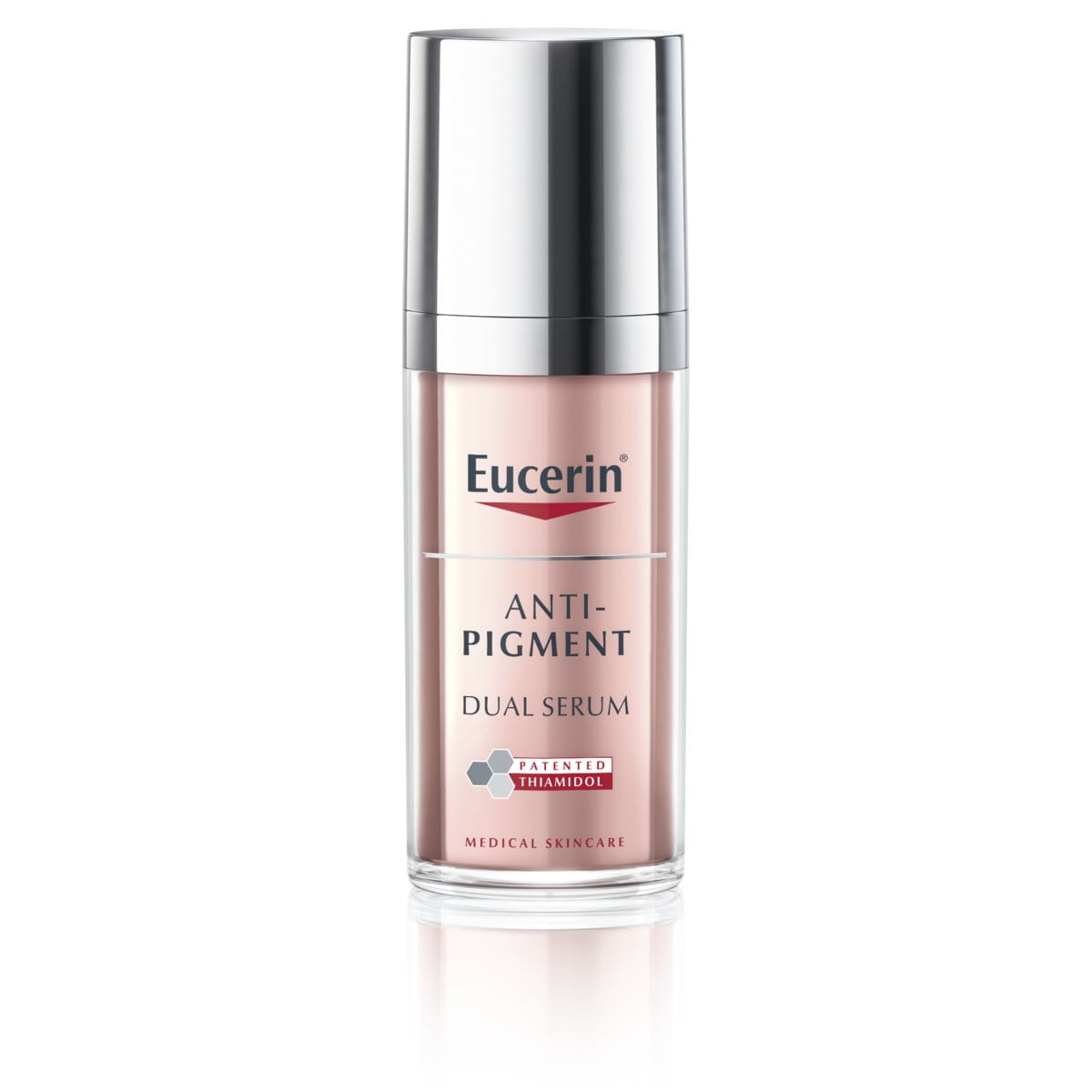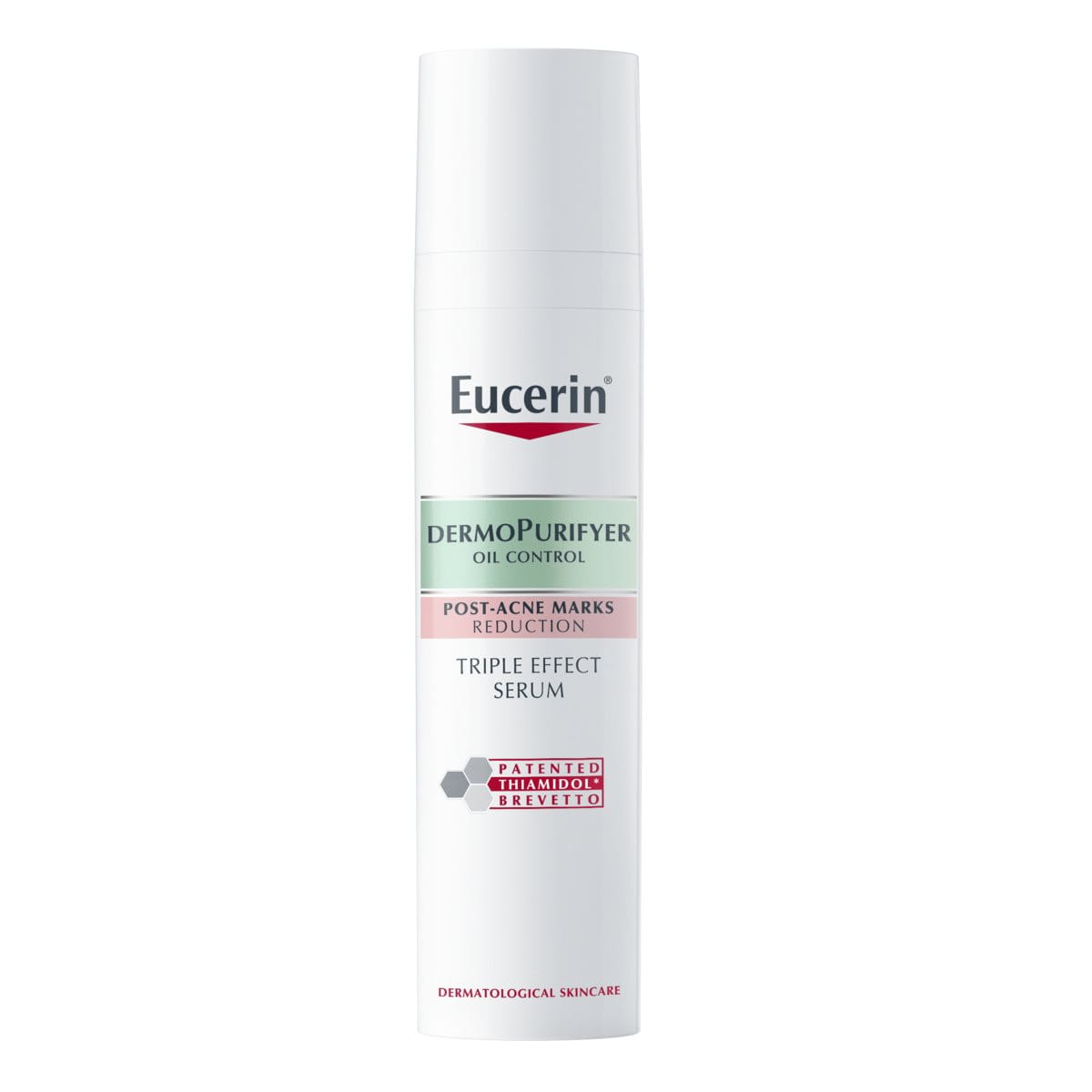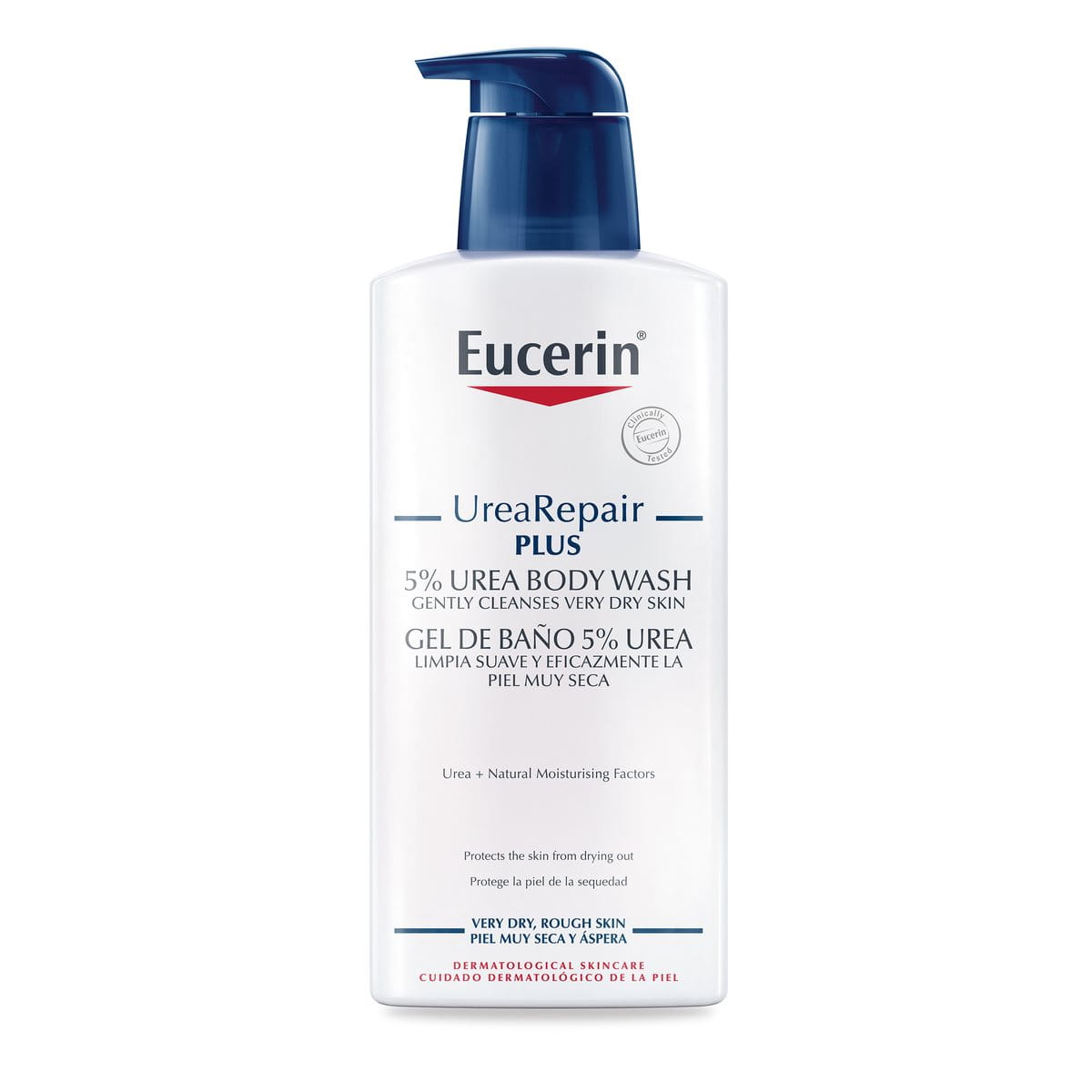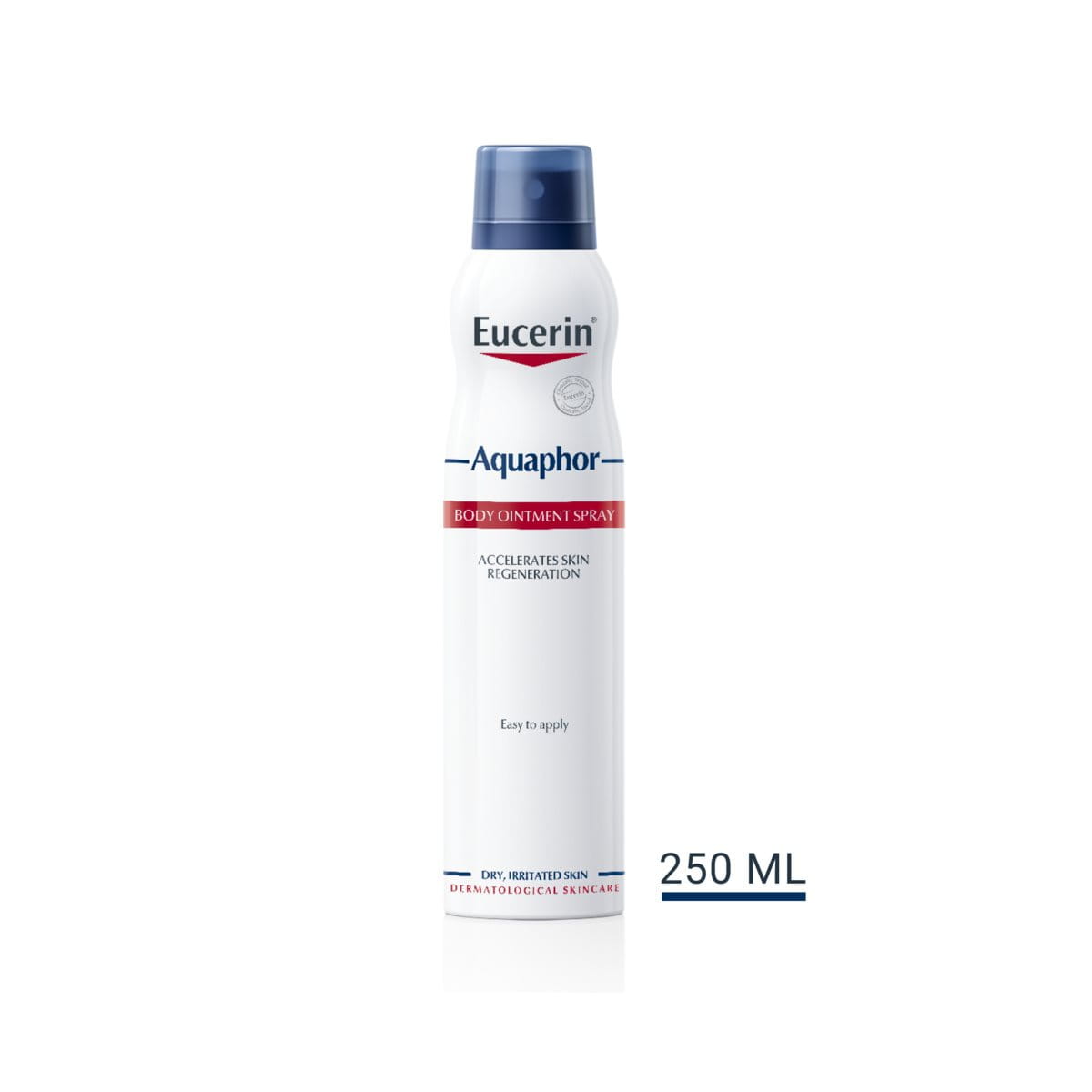Dry, flaky skin on the body is a common skin complaint, with over 40% of visits to dermatologists relating to skin dryness. The skin is one of the body's most important organs. It gives us our sense of touch, regulates body temperature and protects against infections. However, dry, itchy, scaly and flaky skin can be uncomfortable and irritating if severe.
Dry skin patches also cannot function as well as normal, hydrated skin, with an increased risk of sun damage, premature aging and infections. In this article, learn about the symptoms and causes of dry skin on the body as well as how to treat it effectively.
Signs & symptoms of dry skin on the body
Dry skin can occur all over the body, although the most commonly affected areas include the hands, face, elbows, legs, feet, scalp and arms. Often, the dry skin patches develop in areas which are more exposed than others such as exposure to cold air in winter, although dry skin can be caused by skin conditions such as eczema and psoriasis.


When skin on the body becomes very dry, it may feel extremely tight, scaly or leathery and often is itchy or even painful. For extremely dry skin, the affected areas may feel rough, cracked and sore. However, it may not be obvious that dryness is the cause of these skin symptoms depending on the severity of the condition and the area of the body affected.
- Mild dry skin
At first, you may only notice a light tightness or mild roughness on your skin. As the skin loses further moisture, the patches of dry skin will become rougher and may have a chapped or scaly appearance. These dry, flaky skin patches are likely to itch and cause mild irritation. - Severe dry skin
Extremely dry skin on the body occurs when dry patches remain untreated or if the dry skin treatment used is ineffective. The skin may become damaged, feeling extremely tight, rough and potentially cracked and bleeding. Very dry skin is often extremely itchy and prone to irritation. Learn more about rough and cracked body skin.
Dry, scaly skin
Large, scale-like flakes are the result of the loss of the outer layer of the epidermis. Skin looks dry and cracked and starts to peel, leading to a scaly appearance. The scales then redden and itch. Since scaly skin can be quite visible, especially on areas like the hands and face, scaling skin can impact a person's confidence.
Dry skin on hands
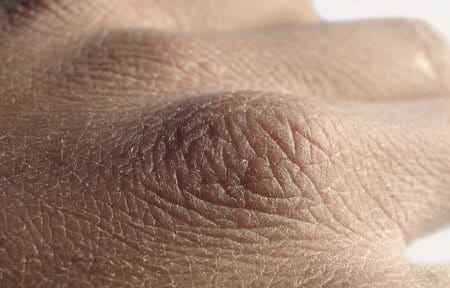
Dry skin on the hands, including flaky and cracked skin on the knuckles, fingers and palms is particularly common, especially if you are washing your hands frequently or more than often or are using hand sanitizer. Find out more about how to treat dry skin on hands in our guide Dry Hands: Causes & Treatment.
Dry skin on feet
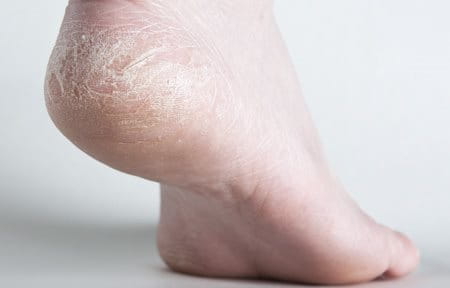
Dry skin on the feet, in particular dry skin patches in between the toes and around the heel are also common. This is because there are various parts of the feet which are weight-bearing areas, such as the balls of our feet, as well as areas which often experience friction such as the ankles and soles. This friction and pressure can cause damage, causing dry, peeling skin to form. In severe cases, the dry patches of skin can become cracked and sore such as cracked heels which is often painful. For specific information about treating extremely dry skin on the feet, read our guide on How To Treat Dry, Cracked Skin On Feet and Hands.
Dry skin conditions
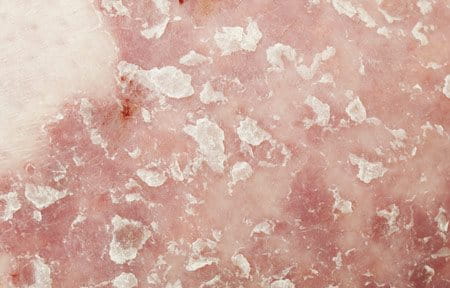
Dry skin on the body can also be related to certain skin conditions:
- Xerosis is the medical term for dry skin. Most people will have experienced xerosis at some point in their life, although more severe cases are often long-lasting and require you to tailor your routine to your skin’s needs.
- Atopic Dermatitis and Psoriasis are also linked to dryness. Skin that is affected by these conditions typically reddens, becomes flaky, and feels very itchy.
- Discoid eczema causes circular dry skin patches on the body. They typically appear on the torso and lower body and do not usually affect the facial or scalp areas.
- Metabolic conditions, such as diabetes mellitus and kidney disease, can also increase the risk of dry skin on the body.
- Sensitive skin is a common reason for dry skin on the body, it commonly comes from dehydration but some people’s skin can be naturally sensitive.
Attention
If you are worried or unsure about your symptoms, or they are becoming worse, we recommend that you see your doctor or make a request to see a dermatologist for a face-to-face consultation.
If you need further information to help you identify the cause of your skin complaint, and which treatment route to take, the skin test may be a useful diagnostic tool.
Causes of very dry skin on the body
There are many causes of dry skin on the body, as well as contributing factors which can worsen symptoms of dryness. These range from environmental influences and inadequate skin care to medical conditions like Psoriasis and Atopic Dermatitis. There are also internal influences which affect our skin’s ability to stay hydrated and hold onto moisture.
External causes of dry skin on the body

- External factors cause the skin’s natural barrier function to become compromised, resulting in increased moisture loss through the skin.
- A breakdown in the skin’s surface barrier due to vital lipids being washed away prevents the skin from trapping moisture in, causing the rate of moisture lost to increase.
- Finally, when the dryness progresses down into the deeper skin layers, the passage of water within the deeper tissues is reduced as important moisture channels become compromised.
External triggers of very dry skin on the body
There are various external triggers which can cause dry skin on the body:
Environmental causes of dry skin:

Skincare factors that affect skin hydration:
Internal factors that can cause dry skin:


Genetic Influences:
The skin's moisture balance is also influenced by genetics. Our genes influence whether someone has oily skin, dry skin or another skin type. Although skin types are inherited, individuals will not necessarily have the same skin type as their parents. However, skin conditions like Atopic Dermatitis, Psoriasis, diabetes and ichthyosis often have a genetic link.
Medication
Dry skin is a side effect of many medications, including diuretic blood pressure medications which work by increasing the rate of water excretion from the body, as well as certain antibiotics and oral acne medications. Always check with a doctor or pharmacist if you are concerned that a medication may be contributing to your dry skin.

Hormonal influences:
Changes in the levels of certain hormones, particularly oestrogen and testosterone, can influence the skin's moisture and lipid levels. This is particularly noticeable after the menopause, when the skin becomes dry due to a decrease in oestrogen production. Dry skin may also occur during pregnancy due to hormonal changes, in addition to the extra demand of bodily fluid.
Diet:
Like any other organ, the skin requires a range of important nutrients in order to function properly. These include unsaturated fatty acids and vitamins. Having a diet that lacks any of these can contribute to dry skin and make existing conditions worse.
Age
As the skin becomes older, the number of sebaceous and sweat glands in the skin decrease, resulting in a reduced ability to produce sweat and lipids. Similarly, the water content of the skin and its ability to hold moisture is also reduced. These factors lead to dryness and a loss of elasticity, which in turn contributes to skin ageing and the development of fine lines and wrinkles. You can learn more about age-induced dryness in the skin here.
Contributing factors to dry & flaky skin on the body
In addition to the main causes of dry skin on the body that have been outlined above, there are several other factors that affect the severity of skin dryness. An awareness of these factors will help you to avoid them and thereby reduce their impact.


Lack of effective dry skin treatment
When dry skin is not treated quickly, the severity of the dryness can increase. This can lead to the moisture network in the deeper layers of the skin to be disrupted. When this happens, it’s essential to use a moisturiser that is clinically and dermatologically proven to address this problem to treat dry, flaky skin effectively.
Sun exposure
Sun exposure damages your skin and hinders its ability to retain moisture; it also diminishes your skin's ability to replenish and repair itself, which can worsen dehydrated skin. To protect dry skin from sun damage, wear sunscreen with an appropriate Sun Protection Factor (SPF) that also restores missing moisturising to replenish the skin. Some occupations can increase the risk of dry skin development due to constant sun exposure. It is also important that your sun cream, and any other skincare products that are used on your dry skin do not contain irritating perfumes and colourants: dry skin, especially dry facial skin, is more prone to irritation than normal skin.

Dehydration
The skin receives its moisture via the body and is therefore dependent on the body’s water balance for keeping the skin hydrated and soft. When the body is dehydrated it reduces the supply of moisture to the skin, which slows down the natural flow of water through the skin. This is how dehydration can contribute to the worsening of dry skin conditions, especially in elderly people who are prone to dehydration as the sensation of thirst diminishes with age.
Smoking
Cigarettes contain many toxins, such as nicotine, which may reduce blood flow. A decreased blood flow results in a decreased metabolic rate, causing the skin to age prematurely and dry out.
Dry skin treatment: How to get rid of dry skin
Dry skin is caused by a breakdown in the skin’s barrier function, which leads to the loss of moisture and a decline in the skin's water-binding capacity. Therefore, dry flaky skin needs a skincare routine that does not cause any further deterioration of the skin barrier and replaces the missing natural moisture.
Dry skin to very dry skin as well as dryness caused by diabetes or Psoriasis requires tailored products that provide the appropriate care and protection to restore moisture levels and promote healing. In addition, skincare for dry skin should include products that are suitable for the severity of dryness, depending on the person. For instance, Atopic Dermatitis in babies and young children require specific products for treatment that differ from those tailored to adults with this condition. When choosing a skincare product for children, always check the age recommendation.
How to treat dry skin on the body


Moisturising dry body skin
Dry, rough and tight skin can be caused by a breakdown in three main areas of moisture control: a broken surface barrier caused by a deficiency of skin lipids, a dehydrated stratum corneum (upper layers of the skin) brought about by a decrease in natural moisturising factors, and poor moisture distribution in the lower layers of the skin.
Cleansing dry skin on the body
Dry skin is most likely dry due to the skin’s surface barrier breaking down, therefore it is important that the cleanser you use is gentle enough not to wash away this natural, protective barrier. Eucerin UreaRepair Plus 5% Urea Replenishing Body Wash is a gentle, replenishing and effective body cleanser for very dry, rough skin. This can be used daily and will not wash away skin’s natural protective barrier.
Dry skin cream

The primary aim of dry skin moisturisers is to restore the moisture balance in the upper layers of the skin (stratum corneum). Compounds like Urea and Lactate bind moisture into the stratum corneum helping to keep the skin soft, plump and hydrated. For effective hydration, the minimum recommended concentration of Urea in dry skin creams and lotions (even for treating mild dry skin) should be at least 5%.
While extremely dry skin generally requires a higher concentration of Urea and other moisturising substances. The Eucerin Urea range for dry skin includes products with 5% and 10% Urea, including soothing body creams and lotions, face and hand creams for dry skin and body wash. Eucerin UreaRepair PLUS 10% Urea Lotion gives very dry, rough body skin the daily care it needs.
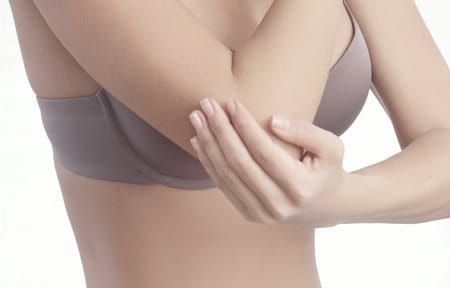
The Eucerin Urea range uses Urea, as well as other restorative ingredients to address the above three areas of moisture loss in the skin to rebalance the skin’s natural moisture levels:
- Firstly, Urea and other water-binding natural moisturising factors are replenished, resulting in improved hydration in the stratum corneum.
- Secondly, Ceramide-3 repairs the lipid skin barrier to lock in moisture.
- Finally, Glycerin (a humectant) acts to help to retain moisture in the upper skin layers.
Protecting dry body skin against sun-exposure
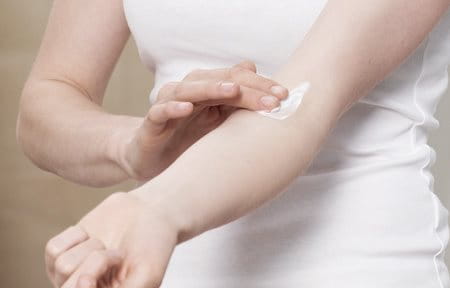
To protect dry skin from sun damage, it is advisable to reduce sun exposure by wearing protective clothing and sunscreen when going outdoors. A sunscreen for dry skin should also not contain any irritating perfumes and colourants, as dry skin is prone to irritation. Eucerin Sunscreens for dry skin offer sun protection with COLIPA- and EU-compliant UV filters, as well as antioxidant Licochalcone A to protect against UV-induced oxidation and premature ageing.
Avoiding contributing factors
In addition to having a good skin cleansing and moisturising routine, avoiding contributing factors that can worsen dry skin is essential for effective dry skin treatment.
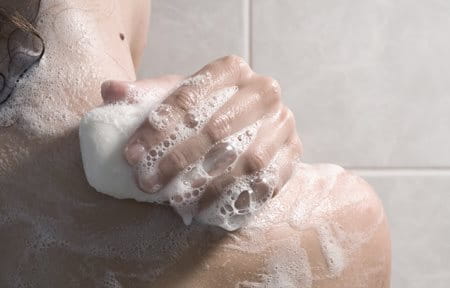

- Avoid dry air by spending less time outdoors in hot and cold weather, and by using a humidifier indoors when the heating is on. Air conditioning and central heating units indoors remove moisture from the air and by consequence the skin.
- Reduce the time spent in hot water by having quick showers between 5-10 minutes, instead of long baths. It is best to use warm, rather than hot water when washing and to avoid washing the face, as this can strip the skin of its natural oils.
- Use gloves when washing dishes and cleaning to help avoid hot water and strong detergents which can irritate dry skin.
- Wear clothes made of natural materials, like cotton and silk, that do not irritate the skin. While wool is natural, it can cause skin irritation and is best to be avoided for those with dry, itchy skin.
- Use a clothes detergent which does not contain any dyes or perfumes as these can remain on the clothes after washing and irritate dry skin, especially sensitive skin.
- Use beauty and skin products that do not contain perfumes, colourants and parabens to avoid irritating dry skin.
- Ensure that you drink enough water - it is especially important that the elderly do this as they are more prone to dehydration.
Our brand values

We deliver a holistic dermo-cosmetic approach to protect your skin, keep it healthy and radiant.

We work together with leading dermatologist and pharmacist partners around the world to create innovative and effective skincare products they can trust and recommend.

For over 100 years, we have dedicated ourselves to researching and innovating in the field of skin science. We believe in creating active ingredients and soothing formulas with high tolerability that work to help you live your life better each day.
